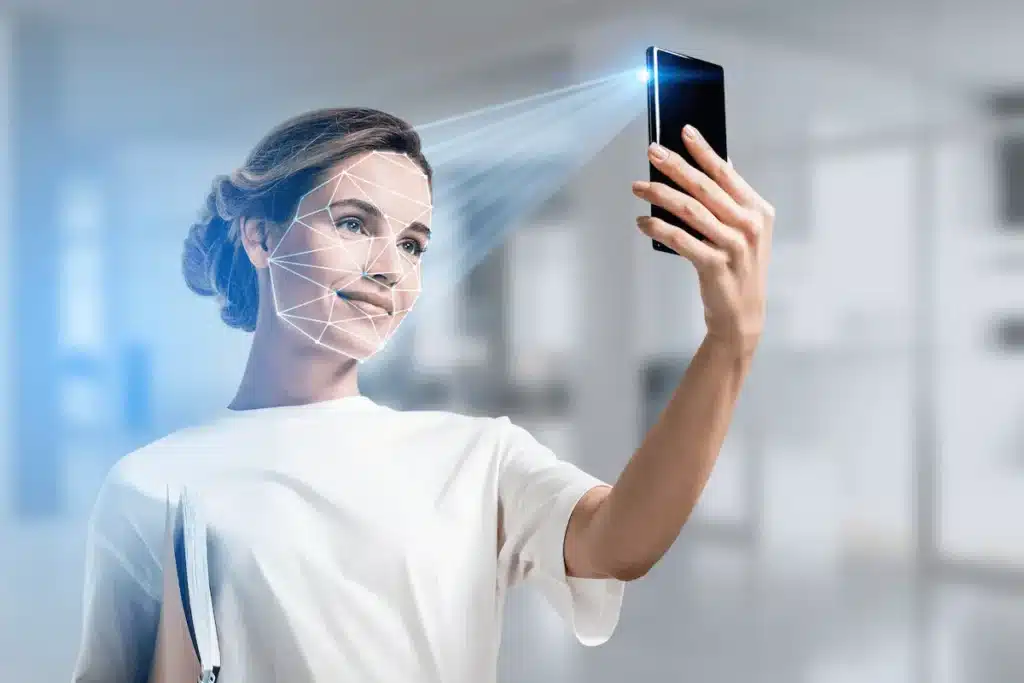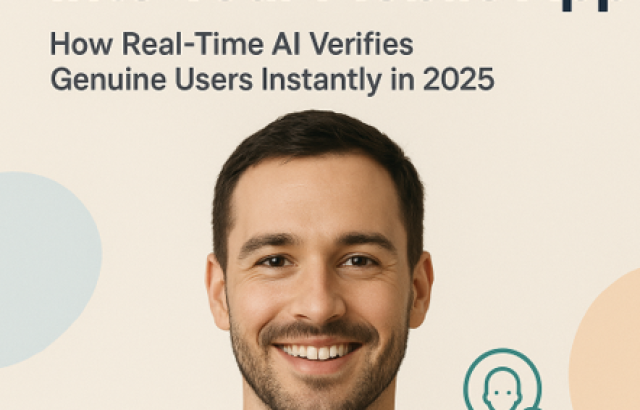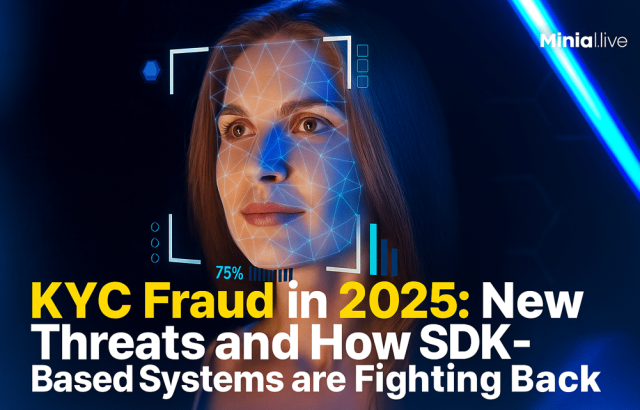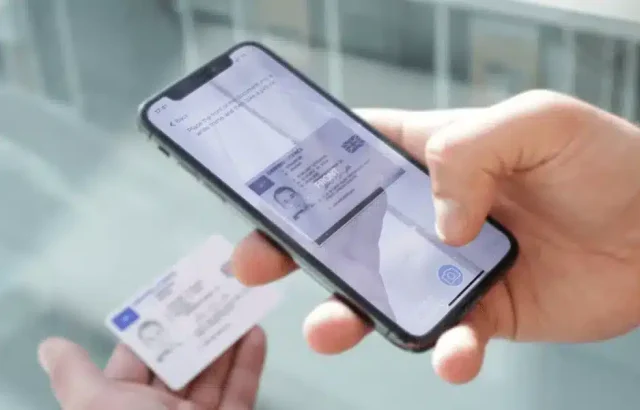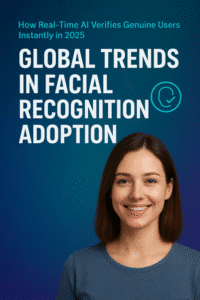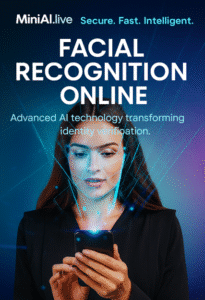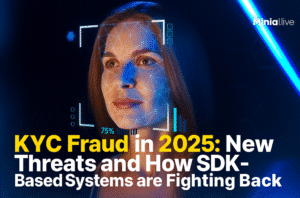Introduction
While digital identity authentication is already becoming critical in a connected world, the advent of deepfake technology has brought unprecedented risks. AI-generated advanced videos and images of real people, known as deepfakes, can be eerily convincing. But, when maliciously used, they are able to bypass regular KYC processes and become a serious threat to companies, governments, and financial institutions.
Face Liveness Detection Software Development Kits (SDKs) have therefore become a must for facing this new kind of threat. These instruments aim to identify authentic human use from synthetic or spoofed interactions. MiniAiLive is one of the leaders in this area, and its 3D Passive Face Liveness Detection SDK has a worldwide lead as the most advanced solution for non-intrusive liveness detection in real-time.
Understanding the Threat: Deepfake-Driven KYC Fraud
What Are Deepfakes?
Deepfakes, which are synthesized media that use deep learning, usually GANs (Generative Adversarial Networks). They can produce hyper-real videos or images of faces based on training on massive datasets of real individuals. Originally a source of entertainment and research, deepfakes quickly transitioned into a means for identity theft, misinformation, and crime.
The KYC Vulnerability
KYC processes are implemented to identify users in industries such as banking, insurance, fintech, and government services. Facial recognition, video verification or ID photo matching are mostly used in KYC processes. These traditional approaches are effective for most static photo spoofing yet are particularly susceptible to video-based deepfakes.
How Deepfakes Bypass Legacy Systems
- Static Matching Loopholes: The majority of systems verify only the match between the captured image and the ID photograph stored in a database.
- No Real-Time Interaction: Passive ID photo checks are easily circumvented by pre-recorded or AI-generated content.
- No indication of movement: Deepfakes may replicate head movements, blinking, etc., thus becoming hard to differentiate from live video.
If KYC processes are only reliant on deepfake detection and not on the smart use of liveness detection, all of the above could happen fraudulently, with fraudsters hiding behind deepfakes while they open accounts, move money, or commit identity fraud.
The Power of Face Liveness Detection
What is Liveness Detection?
Liveness detection is a form of biometric security that differentiates a live person from a spoof artifact (photo, video, or mask). This guarantees that the system is dealing with a real human and not an altered avatar.
Types of Liveness Detection
- Active Liveness Detection: Requires that the user performs certain actions, such as blinking, smiling or turning their head. This works, albeit with some friction in the user experience.
- Passive Liveness Detection: Runs unnoticed in the background. It, as a result, studies involuntary facial features and micro-movements, all in a passive way, without user effort. Passive detection is also more user-friendly and scalable.
How Face Liveness Detection SDKs Mitigate Deepfake Threats
Deepfake Defense Through Real-Time Analysis
Face Liveness Detection SDKs apply real-time image analysis and trained AI models that learn discrepancies in patterns to look for anomalies. These can include:
- Uneven lighting on the face
- Frame interpolation artifacts
- Facial depth abnormalities
- Inconsistent eye and mouth movement
The algorithms behind such SDKs can discern if the input is a real human face by analyzing hundreds of possible facial characteristics and temporal information.
Prevention Instead of Detection
Traditional fraud detection tools identify suspicious behavior after the fact. Face liveness detection, however, prevents fraudulent access at the front gate. This proactive approach is essential for mission-critical KYC processes.
MiniAiLive’s 3D Passive Face Liveness Detection SDK: A Technical Overview
What Makes MiniAiLive Stand Out?
MiniAiLive is a global pioneer in biometric authentication. Their 3D Passive Face Liveness Detection SDK is designed for security-first digital identity verification without sacrificing user experience.
Core Capabilities
- True 3D Passive Liveness Detection: Unlike 2D analysis, MiniAiLive leverages 3D mapping to analyze facial depth and texture for enhanced accuracy.
- Sub-Second Response Time: Authentication is performed in under one second, making it ideal for real-time applications.
- Facial Movement Analysis: Subtle, involuntary facial movements are used to confirm the presence of a real human.
- Robust RESTful APIs: Seamless integration with existing systems via standardized APIs.
- Cross-Platform Compatibility: Supports both Android and iOS SDKs for wide deployment.
- Cloud and On-Premise Flexibility: Deploy the SDK based on your infrastructure and compliance requirements.
Passive Yet Powerful
3D Passive Liveness Detection operates behind the scenes. Users aren’t prompted to move or speak; instead, the system unobtrusively checks for signs of life. This ensures minimal user friction while maintaining top-tier security.
Real-World Applications Across Industries
Face liveness detection technology is no longer limited to niche security applications. Today, its integration into diverse industries is transforming the way organizations verify identity, enhance security, and streamline customer experiences—all while staying ahead of fraud.
Banking & Fintech
Banks and digital finance platforms use face liveness detection during onboarding and high-risk transactions. It helps prevent fraudulent account creation, secures mobile logins, and supports compliance with KYC and AML regulations—all while ensuring frictionless user interactions.
Healthcare & Telemedicine
As telehealth adoption grows, verifying patient identities remotely has become critical. Face liveness detection ensures only the right patient accesses sensitive health records, schedules appointments, or receives prescriptions—preventing medical identity theft.
Government & e-Governance
National ID programs, immigration processes, and voting systems are leveraging this technology for secure digital identity verification. Governments use liveness detection to safeguard citizen services, reduce impersonation, and enhance public trust.
E-Commerce & Delivery Platforms
Retailers and logistics companies apply liveness detection for age verification, secure customer authentication, and proof-of-delivery confirmation. This helps combat fraud in high-value or restricted product categories.
Travel & Hospitality
Airports, hotels, and car rental services deploy face liveness detection to enable seamless check-ins, automated kiosks, and biometric boarding, improving both security and customer experience.
In every sector, from education to workforce management, MiniAiLive’s 3D Passive Face Liveness Detection SDK empowers organizations to move beyond outdated verification tools. By ensuring that only real users gain access, businesses can scale securely in a digital-first world.
Technical Benefits of Integrating MiniAiLive SDK
Accuracy and Speed
MiniAiLive combines deep learning algorithms with 3D facial mapping to deliver:
- 99.9% Accuracy: In liveness detection and identity verification
- <1s Response Time: For immediate user feedback
Developer-Friendly APIs
- RESTful design for easy backend integration
- Secure communication protocols
- Extensive documentation and SDK libraries
Compliance-Ready Architecture
- GDPR, CCPA, and AML/KYC compliant
- Configurable privacy settings
- On-premise options for data-sensitive environments
Overcoming User Experience Challenges with Passive Detection
One of the main concerns in identity verification is balancing security with a seamless user experience. Traditional active liveness checks often disrupt the onboarding process, leading to user drop-offs. In contrast, MiniAiLive’s 3D Passive Face Liveness Detection SDK ensures both usability and safety.
Since users are not required to perform any deliberate actions—like blinking or moving their head—passive detection happens unnoticed. This reduces verification time, increases success rates, and lowers abandonment during registration.
From fintech apps to government ID programs, this smooth, non-intrusive approach encourages user trust. It creates a verification flow that feels almost invisible while silently combating sophisticated attacks in the background.
By removing friction without compromising protection, MiniAiLive enables organizations to scale their digital onboarding and verification efforts without alienating users. That’s a win for both compliance teams and customer satisfaction.
Deepfake Trends and Why AI-Powered Defense is Essential
The technology behind deepfakes is advancing rapidly. Tools once restricted to researchers are now publicly available, allowing even non-experts to generate convincing fake identities. These AI-generated media files can replicate everything from facial expressions to background environments in real-time.
In this environment, traditional image-based verification methods fall short. They were never designed to counter dynamic, AI-generated content. That’s where AI-powered liveness detection—like MiniAiLive’s SDK—proves indispensable.
By continuously learning from new fraud patterns and improving its detection models, MiniAiLive stays ahead of emerging threats. Its use of AI not only strengthens liveness checks but also adds adaptability, making the system future-ready against the next wave of synthetic identity fraud.
Organizations investing in such advanced biometric defenses are better equipped to stay compliant, avoid losses, and maintain customer confidence in an era of machine-driven deception.
Securing Biometric Data in the Age of Privacy Regulations
Biometric security must go hand-in-hand with data privacy. As governments enforce regulations like GDPR and CCPA, organizations must be vigilant in how they collect, process, and store user biometrics.
MiniAiLive’s SDK is designed with privacy in mind. It supports data anonymization, local processing options, and encryption protocols to prevent data leakage. Organizations can choose on-premise deployment when data sovereignty is a concern.
Additionally, MiniAiLive helps enterprises comply with KYC and AML obligations while respecting individual rights. Built-in privacy features include:
- User consent management
- Temporary data caching
- Configurable data retention policies
By embedding privacy-first practices, MiniAiLive ensures that secure identification does not come at the cost of user trust. It empowers organizations to protect identities while complying with today’s strict regulatory frameworks.
The Future of KYC: Touchless, Secure, and Scalable
As regulatory scrutiny intensifies and fraud techniques evolve, the demand for seamless yet secure KYC solutions is growing. Face Liveness Detection SDKs represent a critical pillar of modern digital identity infrastructure.
Passive liveness detection, particularly in its 3D variant, is setting the new standard. It offers the perfect balance between user convenience and fraud resistance. As remote verification becomes the norm, this technology will play an increasingly central role.
Conclusion: Why MiniAiLive Is the Global Leader
MiniAiLive delivers industry-leading capabilities in the field of biometric identity verification. With its 3D Passive Face Liveness Detection SDK, the company offers unmatched speed, security, and user experience. Their solutions are trusted by governments, banks, fintech platforms, and enterprises worldwide.
- Touchless Biometric Authentication: Reliable and frictionless
- Cutting-Edge OCR and ID Verification: Comprehensive identity assurance
- Palmprint, Palm Vein, and Face Recognition: Multi-modal biometric security
By adopting MiniAiLive’s Face Liveness Detection SDK, organizations can fortify their KYC workflows against the looming threat of deepfake-based fraud. In a world where identity can be faked at the pixel level, MiniAiLive ensures that trust remains real.
Frequently Asked Questions
What is face liveness detection, and why is it essential for KYC?
Face liveness detection is a biometric method used to ensure that a real, live person is interacting with a system rather than a spoof or deepfake. For KYC processes, this technology prevents identity fraud by confirming the physical presence of a genuine user during digital onboarding.
How do deepfakes pose a threat to traditional identity verification methods?
Deepfakes can simulate realistic facial features and movements, easily bypassing systems that rely on static images or basic video checks. Without robust liveness detection, these AI-generated forgeries can be used to exploit KYC systems, leading to unauthorized account access and fraud.
How does MiniAiLive’s 3D Passive Liveness Detection SDK differ from other solutions?
MiniAiLive’s SDK uses advanced 3D facial mapping and passive detection, meaning users don’t need to perform gestures or actions. It silently verifies authenticity in under one second, making it both highly secure and seamless for the user experience.
Can passive liveness detection work in real-world, low-light, or mobile environments?
Yes, MiniAiLive’s SDK is optimized for real-world use. It supports various lighting conditions, device cameras, and mobile platforms (iOS and Android), ensuring reliable performance regardless of user location or hardware.
Is MiniAiLive’s solution compliant with privacy regulations like GDPR and CCPA?
Absolutely. MiniAiLive’s SDK is designed with privacy at its core. It offers features such as on-premise deployment, encrypted data transfer, anonymization, and customizable data retention, helping organizations meet global compliance standards.
What industries benefit the most from implementing face liveness detection?
Sectors including finance, healthcare, e-government, e-commerce, and logistics benefit significantly. Any industry that relies on remote identity verification can strengthen security and streamline onboarding using MiniAiLive’s SDK.
How easy is it to integrate MiniAiLive’s Face Liveness Detection SDK into existing platforms?
MiniAiLive offers developer-friendly RESTful APIs and comprehensive SDKs compatible with Android and iOS. Integration is straightforward, with thorough documentation and support available, enabling quick deployment into existing KYC and authentication workflows.
How does passive face liveness detection differ from active methods?
Passive liveness detection operates silently in the background without requiring user interaction, while active methods prompt users to perform actions like blinking or nodding. Passive systems enhance the user experience by removing friction, making them ideal for large-scale, real-time verification workflows.
Can MiniAiLive’s SDK detect sophisticated deepfakes in real-time?
Yes. MiniAiLive’s 3D Passive Face Liveness Detection SDK uses AI-powered algorithms to identify deepfake indicators such as unnatural facial depth, lighting inconsistencies, and micro-movement anomalies—all in under one second. This enables real-time decision-making with extremely high accuracy.
Is the MiniAiLive SDK compliant with data privacy regulations like GDPR and CCPA?
Absolutely. MiniAiLive is designed with a privacy-first architecture, offering features like user consent prompts, data encryption, temporary caching, and on-premise deployment. These safeguards help businesses stay compliant with global privacy laws while securing biometric data.


